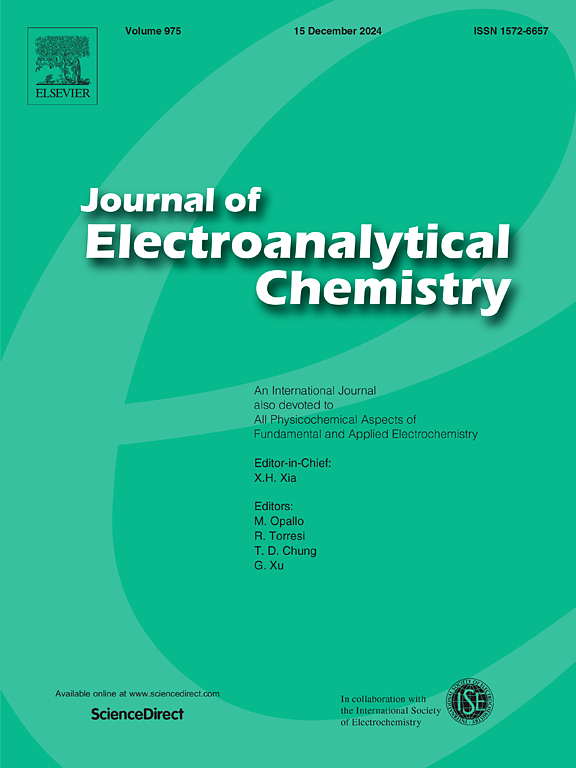A novel Co-free high-entropy oxide (FeNiCrMnMgAl)3O4 as advanced anode material for lithium-ion batteries
IF 4.1
3区 化学
Q1 CHEMISTRY, ANALYTICAL
引用次数: 0
Abstract
High-entropy oxide (HEO) is a novel type of anode material for lithium-ion batteries (LIBs), exhibiting high specific capacity and excellent cycle stability. Currently, the electrochemical research on HEOs relies on Co to achieve high capacities, however, the cost of Co may hinder the large-scale application of HEOs. In this study, a scalable high-temperature solid-state method was used to synthesize Co-free HEO (FeNiCrMnMgAl)3O4. The effect of sintering temperature on electrochemical performance of HEO was investigated, with results indicating that HEO-1000 demonstrated superior electrochemical performance. The HEO-1000 exhibited a high specific capacity (reaching 555.79 mAh/g under 200 mA/g), long cycling stability (after 1000 cycles at 1000 mA/g, the capacity retains at 458.75 mAh/g, achieving 90.5 % retention rate), and favorable rate capability (achieving 436.11 mAh/g under 1000 mA/g). In addition, we analyzed the structural evolution during the cycling process using ex-situ XPS, XRD, and TEM analyses, which indicated that partial conversion reactions occurred in the HEO during lithiation/delithiation, and the short-range ordered crystal structure was preserved. This characteristic is beneficial for enhancing the cyclability of the electrode. This research introduces a strategy to the design of high-entropy energy storage materials and provides insights for the advancement of next-generation anode materials for LIBs.
求助全文
约1分钟内获得全文
求助全文
来源期刊
CiteScore
7.80
自引率
6.70%
发文量
912
审稿时长
2.4 months
期刊介绍:
The Journal of Electroanalytical Chemistry is the foremost international journal devoted to the interdisciplinary subject of electrochemistry in all its aspects, theoretical as well as applied.
Electrochemistry is a wide ranging area that is in a state of continuous evolution. Rather than compiling a long list of topics covered by the Journal, the editors would like to draw particular attention to the key issues of novelty, topicality and quality. Papers should present new and interesting electrochemical science in a way that is accessible to the reader. The presentation and discussion should be at a level that is consistent with the international status of the Journal. Reports describing the application of well-established techniques to problems that are essentially technical will not be accepted. Similarly, papers that report observations but fail to provide adequate interpretation will be rejected by the Editors. Papers dealing with technical electrochemistry should be submitted to other specialist journals unless the authors can show that their work provides substantially new insights into electrochemical processes.

 求助内容:
求助内容: 应助结果提醒方式:
应助结果提醒方式:


